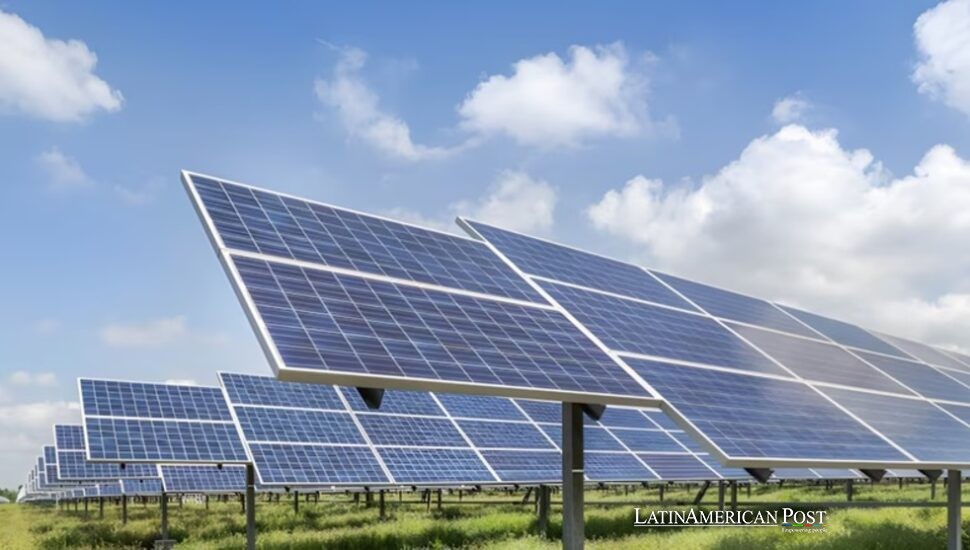Peru’s Largest Solar Plant Shines for the Nation but Leaves Its Indigenous Neighbors in the Dark

In the blistering desert of southern Peru, sunlight is abundant, steady, and strong enough to power hundreds of thousands of homes across the country. Yet in the tiny village of Pampa Clemesí—just a short walk from the nation’s largest solar complex—residents end their days in darkness, waiting for a government promise that never seems to arrive.
Power in Sight, But Out of Reach
From her yard, Rosa Chamami can see the Rubí solar plant at night, its endless rows of panels illuminated by white security lights. The facility, paired with the nearby Clemesí plant, generates roughly 440 gigawatt hours of electricity each year—enough to supply 351,000 homes. But Rosa’s house has no sockets, no lights, no connection to Peru’s national grid.
It’s a contrast so sharp it feels like a cruel joke. Since 2018, more than 800,000 panels have been installed at Rubí and Clemesí in the Moquegua region, 1,000 kilometers south of Lima. The site is a solar engineer’s dream, blessed with more than 3,200 hours of sunshine annually. Yet the 150 or so people who still live in Pampa Clemesí—just 600 meters from the plant—rely on flashlights, firewood, and the occasional donation of a small solar panel. Most can’t afford the batteries and converters needed to make those panels truly useful.
“In Peru, the system was designed for profitability,” explained Carlos Gordillo, an energy specialist at the University of Santa María in Arequipa, in an interview with the BBC. “Nobody bothered to think about connecting sparsely populated communities.”
A Project Stalled in Bureaucracy
The plant’s operator, Orygen, insists it has done its part. Marco Fragale, the company’s executive director in Peru, said they joined a government-led electrification plan for Pampa Clemesí and even built a dedicated line for the village. “We’ve erected 53 towers, laid almost 4,000 meters of underground cable, and invested $800,000 to bring electricity right to their doorstep,” he told the BBC.
But the final stretch—the short two kilometers needed to connect the line to individual homes—falls under the responsibility of Peru’s Ministry of Mines and Energy. That work was supposed to begin in March 2025. The date came and went. No crews arrived. No wires were laid. The ministry did not respond to repeated requests for comment.
In the meantime, the village’s new lamp posts, delivered and stacked neatly in a field years ago, stand untouched, collecting dust under the same sun that powers the sprawling Rubí plant next door.
Living Without Light
In Pampa Clemesí, life after sunset is a matter of adaptation. Rosa spends part of each day tracking down a neighbor with enough power to charge her phone, her only link to family near the Bolivian border. By evening, she lights her small outdoor cooking area with a solar torch, preparing sweet tea and fried dough—foods that don’t spoil quickly. Meat and dairy are rare luxuries; vegetables require a costly, time-consuming trip to the city of Moquegua, a 40-minute bus ride each way.
One of the few homes with a working refrigerator belongs to Rubén Pongo, who saved to buy a battery, a converter, and the necessary wiring. On sunny days, the fridge hums for about ten hours; cloudy days cut that down to just a few. Rubén, who helped build the Rubí plant and now works in its warehouse, can see the facility’s substation from his roof. At night, it glows like a small city. He calls it “a little lit-up town”—close enough to see, impossible to reach. Crossing the Pan-American Highway to get there is prohibited.
Over the years, the lack of basic services has driven people away. Before the pandemic, Pampa Clemesí had around 500 residents. Now, fewer than 150 remain. For Pedro Chará, who settled here in the early 2000s, the fight for water and electricity has been exhausting. “Sometimes, after waiting so long, you just feel like giving up,” the 70-year-old admitted.
Waiting for the Switch to Flip
Those who remain believe electricity could change everything. “If we had light, people would come back,” Pedro told the BBC. “We stayed because we had no choice. But with electricity, we could build something here.”
The unlit streets grow colder as evening winds whip sand through the village. Families retreat indoors earlier than they’d like. There are no late-night TV shows, no video calls with faraway relatives, no reading before bed—only the sound of the wind and the slight, wavering glow of battery-powered lamps.
Still, hope clings stubbornly here, much like the sand to the unused lamp posts. When asked why she stays, Rosa smiles and glances toward the horizon where the panels stand. “Because of the sun,” she says. “Here, we always have the sun.”
Also Read: Argentina Turns to San Cayetano as Milei’s Austerity Bites Into the Promise of Work
For now, the energy from that sun flows far beyond the desert, lighting streets and homes across Peru. In Pampa Clemesí, it remains tantalizingly close—visible in the floodlit shimmer of the Rubí plant at night—yet just out of reach.




